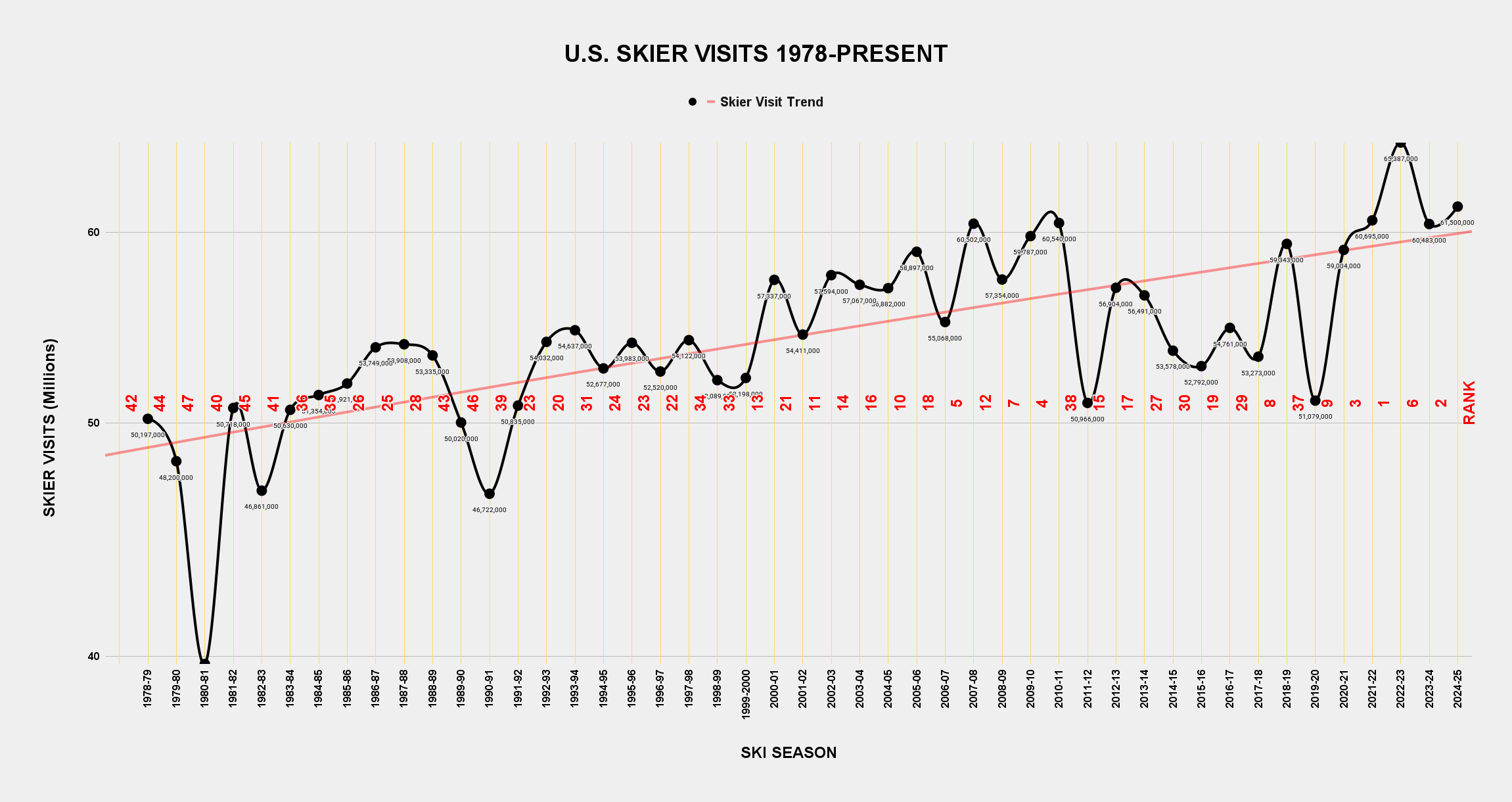Strong Attendance, Big Expansions, 4 Months of Skiing in Tennessee: Reasons to Feel Great About Skiing Right Now
It's OK to like things, Brah.
Approximately 10.6 million U.S. Americans skied or snowboarded during winter 2023-24, according to the most recent data available from the National Ski Areas Association (NSAA). That works out to 3.1 percent of 340.1 million U.S. residents, meaning fewer Americans ski than bowl (67 million), Golf (47.2 million), believe in ghosts (36%), think the Earth is flat (10%), drive a Ford F-series pickup truck (16.1 million), think that dinosaurs and humans coexisted (41%), understand that Puerto Rico is not a foreign country (46%), hunt deer (11 million), or have ever been to Alaska (12%).
So most Americans know very little about SnoSportSkiing. What little they are certain of – that it is the preserve of rich people, that the sport is fading, that skiing has gone corporate, that climate change will be its executioner – is either wholly wrong or grossly oversimplified. The non-ski media, lacking the context to weave a nuanced narrative around the current state or evolution of lift-served skiing in America, are of no help to us. What passes for the ski media is mostly a bunch of braindead Brobot influencers fixated on the evil corporates.
That’s too bad, because we don’t have to try very hard to see that there’s a hell of a lot going right in American skiing today. Here are 16 things to celebrate about the fun and vibrant lift-served ski universe that’s too often ridiculed, misunderstood, and dismissed (yes, I stole this idea from New York mag, which publishes an annual list of reasons to love the city that sometimes feels like everyone’s favorite outhouse):
1) Because U.S. skiing just recorded its second-best year ever
The NSAA has reported annual skier visits since the winter of 1978-79. The three best-attended seasons have all hit in the past four years, half of the top 10 have been in the past five years, and all of the top 10 years have occurred since 2005. Preliminary 2024-25 attendance sits at 61.5 million skier visits, the second-highest total ever:

Check out that moving average (the red line) – average annual skier visits have crept from below 50 million in the late 1970s to just above 60 million today.
That’s not remarkable growth, but it is growth, and hardly a visual of a dying industry. Perhaps more remarkable: skier visits have cracked 60 million for four consecutive years even with inconsistent snowfall. While the 2022-23 ski season delivered the largest average national snowfalls on record (225 inches), this past season recorded just 150 inches – only the ninth-best season in the past dozen:
That 2024-25 drew the second most skier visits ever is a strong indicator that the industry’s decade-long reorientation from storm-dependent day tickets to preseason season pass sales has effectively decoupled a by-definition weather-dependent business from weather.
2) Because consumer choice is flourishing
The laziest of the lazy narratives mischaracterizing skiing to the non-skiing masses is the notion that two companies – Vail and Alterra – have taken unchallenged command of the industry. A widely shared, poorly informed, hyperbolic slushpile of a 2023 Slate article claiming to articulate how “a corporate duopoly ruined skiing” by transforming it into “another soulless, pre-packaged, mass commercial experience” offers the mad-lib template for non-ski media looking to document skiing’s death by stock ticker.
The problem with the duopoly narrative is that it’s just. Not. True.



